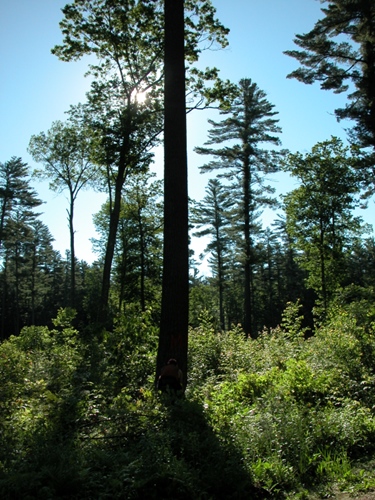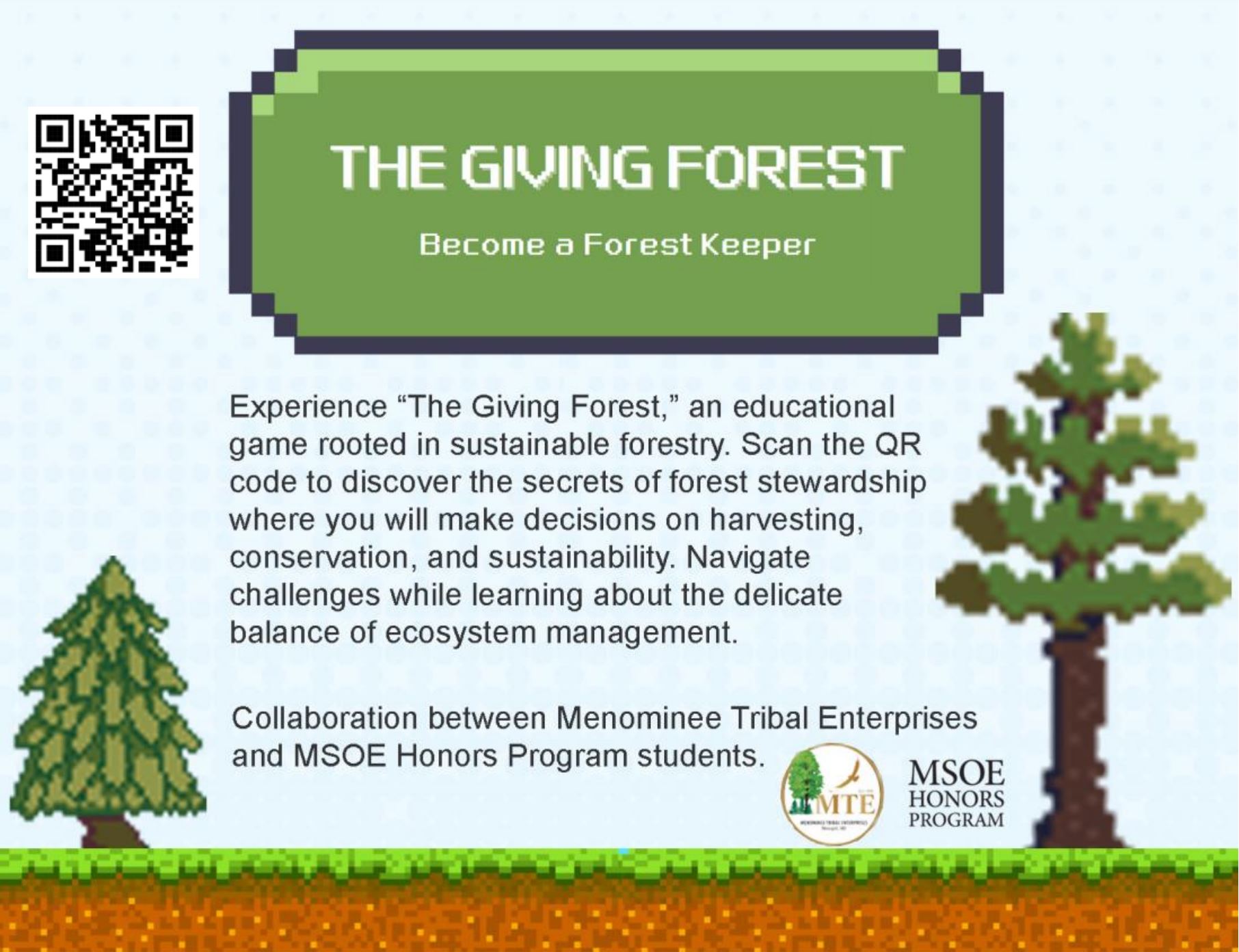
The Enduring Canopy: How the Menominee Tribe Forged a Timeless Path in Sustainable Forestry
MENOMINEE INDIAN RESERVATION, WISCONSIN – In a world grappling with environmental degradation, climate change, and the relentless pursuit of short-term profit, a remarkable story of sustainability has unfolded for generations in the heart of Wisconsin. Here, on a sprawling 235,000-acre reservation, the Menominee Tribe has not just managed a forest; they have embodied a philosophy of coexistence, demonstrating that it is possible to harvest timber for economic prosperity while simultaneously enhancing the health and vitality of the ecosystem.
For over 160 years, the Menominee have commercially harvested timber from their ancestral lands. Yet, astonishingly, after removing more than two billion board feet of wood – enough to build over 1.5 million homes – the forest today stands with more board feet of timber than when they began logging operations in 1854. This isn’t a miracle; it’s the direct result of a profound cultural ethos and an unparalleled commitment to what they call "the Menominee Way" of forest management.

A Legacy Woven in Wood and Wisdom
The Menominee people, whose name translates to "wild rice people," have always lived in intimate relationship with the land. Their history, culture, and spiritual beliefs are inextricably linked to the towering pines, hardwoods, and diverse ecosystems that define their ancestral territory. Long before European settlers arrived, the Menominee practiced sophisticated resource management, understanding the cycles of nature and taking only what was needed.
The mid-19th century brought immense pressure and the threat of forced relocation. Through resilience and astute negotiation, the Menominee secured their current reservation, critically ensuring that their timber resources remained under their control. This foresight laid the groundwork for what would become one of the most successful and enduring examples of sustainable forest management globally.
"Our ancestors always taught us that the forest is not just a collection of trees," explains Doug Cox, a tribal elder and former forester. "It’s our relative, our provider, our home. We don’t own the forest; we are a part of it. And with that comes a sacred responsibility to care for it, not just for ourselves, but for those yet to come."
This responsibility is encapsulated in the Menominee’s core principle: the Seventh Generation philosophy. It mandates that every decision made today must consider its impact on the seventh generation into the future – roughly 140 to 200 years from now. This long-term vision stands in stark contrast to conventional forestry practices that often prioritize quarterly profits over ecological longevity.
The "Menominee Way": A Symbiosis of Tradition and Science
What does the Menominee Way look like in practice? It’s a complex, dynamic system that blends millennia of traditional ecological knowledge with cutting-edge modern forestry science. The result is a forest that defies typical industrial logging models.
Unlike clear-cutting, where entire sections of forest are razed, the Menominee practice selective harvesting. This involves carefully choosing individual trees for removal, leaving the vast majority of the forest intact. Foresters, many of whom are tribal members, walk the land with a deep understanding of its nuances. They identify trees that are mature, diseased, or overcrowded, allowing healthier, younger trees to thrive and ensuring natural regeneration.

"We don’t manage for wood; we manage for the forest," says Tony Brown, a forester with Menominee Tribal Enterprises (MTE), the tribe’s economic arm that oversees forestry operations. "Our goal isn’t just to grow timber; it’s to grow a healthy, resilient forest that can support all its inhabitants – from the smallest insect to the largest deer, and, of course, our people."
This approach means:
- Continuous Forest Cover: The forest is never denuded. Its canopy remains largely unbroken, protecting the soil, maintaining water quality, and providing continuous habitat for wildlife.
- Biodiversity: The Menominee forest is not a monoculture. It’s a vibrant mosaic of species – hardwoods like maple, oak, and birch mix with conifers such as white pine, hemlock, and spruce. This diversity makes the forest more resilient to pests, diseases, and climate change.
- Natural Regeneration: Rather than planting vast numbers of saplings, the Menominee primarily rely on the forest to reseed itself naturally. This ensures that the trees that grow are best suited to the local conditions and maintain genetic diversity.
- Emphasis on Health: Thinning and selective cutting are used to promote the health of the remaining trees, ensuring they have adequate sunlight, nutrients, and space to grow strong and resistant.
- Minimal Waste: Every part of the harvested tree is utilized, from sawlogs to pulpwood, and even bark for landscaping, minimizing waste and maximizing resource efficiency.
The success of the Menominee model is not just anecdotal. It’s scientifically documented. Studies by institutions like the University of Wisconsin and the U.S. Forest Service have consistently shown that the Menominee forest exhibits superior biodiversity, soil health, water retention, and carbon sequestration compared to conventionally managed forests in the region.
Economic Engine and Cultural Anchor
The Menominee forest is far more than just an ecological marvel; it is the economic backbone of the tribe. Menominee Tribal Enterprises (MTE) operates sawmills, a wood products manufacturing facility, and manages the entire forestry operation. It is the largest employer on the reservation, providing jobs, revenue, and services that sustain the community.
"Our ancestors made sure we had this land so we could be self-sufficient," explains Joey Awonohopay, a Menominee legislator. "The forest provides the jobs that allow our people to stay here, to raise their families, and to practice our traditions. It’s not just about money; it’s about sovereignty and cultural continuity."
The revenue generated from sustainable timber harvesting supports essential tribal programs, including healthcare, education, elder care, and cultural preservation initiatives. This self-sufficiency stands as a powerful testament to the tribe’s enduring vision, especially given the tumultuous history of federal policies, including the devastating "termination era" of the 1950s and 60s, which briefly stripped the Menominee of their tribal status and nearly led to the sale of their cherished forest. The tribe’s unwavering fight to restore their sovereignty and protect their forest in 1973 remains a powerful chapter in their story.
Beyond economics, the forest is the living repository of Menominee culture. It’s where traditional medicines are gathered, where ceremonies are held, where language is taught through observation of the natural world, and where the spirits of ancestors are felt. The very act of caring for the forest reinforces their identity and connection to their heritage.
A Beacon for the Future
In an era defined by the urgent need for climate solutions and sustainable practices, the Menominee model offers invaluable lessons. Their approach demonstrates that responsible resource management is not a sacrifice but an investment – an investment in ecological health, economic stability, and cultural resilience.
The Menominee’s leadership has not gone unnoticed. Their forest was one of the first in North America to receive certification from the Forest Stewardship Council (FSC) in 1993, recognizing their exemplary sustainable practices. Foresters and policymakers from around the world visit the reservation to learn from their unique blend of ancient wisdom and modern application.
"What the Menominee have achieved is nothing short of revolutionary," says Dr. Jane Smith, an environmental policy expert who has studied their work. "They show us that there’s an alternative to the boom-and-bust cycle of extractive industries. They prove that long-term ecological health and economic prosperity are not mutually exclusive, but deeply intertwined."
As the world grapples with the complexities of climate change, invasive species, and increasing demands on natural resources, the Menominee forest stands as a living laboratory and a powerful symbol. It is a testament to the enduring power of a people who understand that true wealth is not measured in board feet or quarterly reports, but in the health of the land, the strength of the community, and the promise of a thriving future for generations yet to be born. The enduring canopy of the Menominee forest whispers stories of resilience, wisdom, and a profound commitment to a sustainable way of life that the rest of the world would do well to heed.


